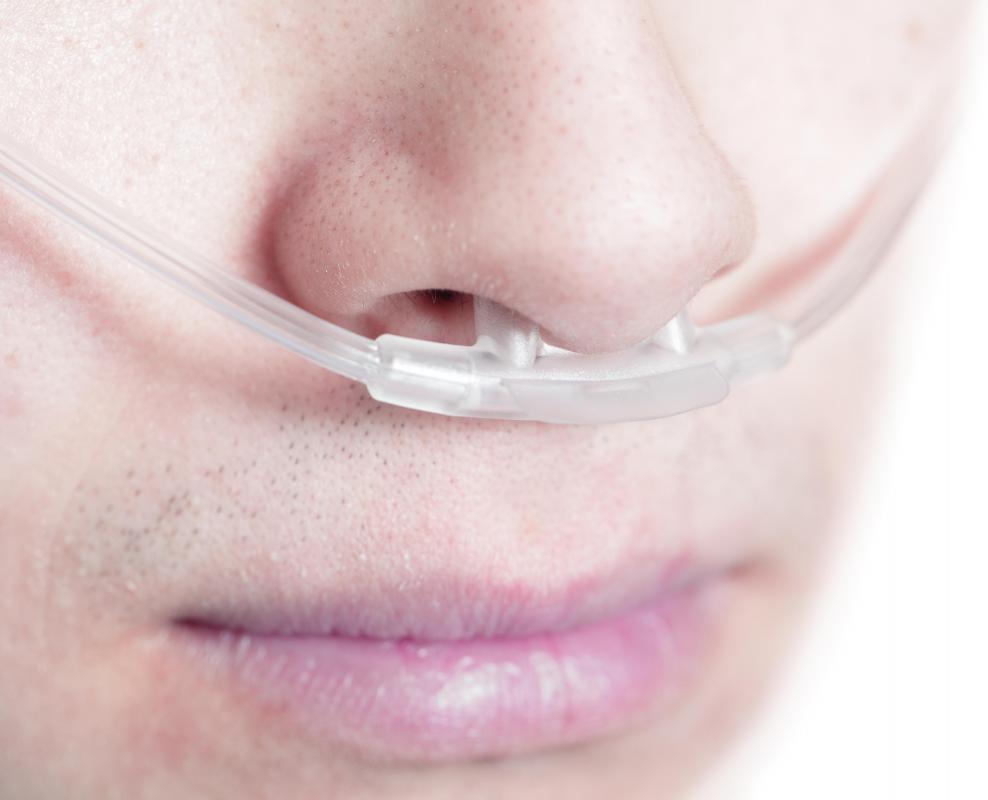At WiseGEEK, we're committed to delivering accurate, trustworthy information. Our expert-authored content is rigorously fact-checked and sourced from credible authorities. Discover how we uphold the highest standards in providing you with reliable knowledge.
What Is Hypoxic Pulmonary Vasoconstriction?
Hypoxic pulmonary vasoconstriction is a naturally occurring protective mechanism that redistributes blood flow into lung areas with a higher degree of ventilation. Beginning before birth, the homeostatic process of hypoxic pulmonary vasoconstriction occurs. Disease processes or high altitude environments may cause the event. Medical conditions or situations, including hypothermia and the presence of vasodilators may interfere with, inhibit, or prematurely reverse the process.
Mechanisms occurring within the lungs cause constriction of the pulmonary arteries when a lung area has low oxygen levels. The medical term for this condition is hypoxia. This action forces the blood into the alveoli where the concentration of oxygen is higher. The process usually occurs in specific areas of one or both lungs when an individual has pneumonia or tumors. Global hypoxia involves all fields of both lungs and occurs when an individual has sleep apnea or experiences altitude sickness.

At high altitudes, full lung hypoxia occurs because of decreased atmospheric pressure. The hypoxic condition leads to vasoconstriction, which leads to high altitude pulmonary edema. When edema occurs, emergency specialists may administer the steroid dexamethasone, which decreases inflammation and encourages fluid reabsorption. Mountain climbers generally carry oxygen supplements that reduce the possibility of hypoxia occurring.

Once oxygen levels normalize throughout all of the lung fields, hypoxic pulmonary vasoconstriction reverses on its own. Researchers believe that the physiological factors that initiate the process include chemical sensors that generate chemical mediators, which regulate proteins, potassium, and calcium channel responses. The sensors and mediators inhibit oxygen sensitive potassium channels, which depolarizes the arteries. This action triggers voltage-gated calcium channels, causing an influx of calcium and artery constriction. The entire series of events occurs within seconds after the body senses moderate hypoxia.

The body may not be able to respond normally to hypoxic events if an individual simultaneously suffers the effects of lower than normal carbon dioxide levels or metabolic imbalances that include acidosis or alkalosis, which accompany hyperventilation and other medical conditions. Situations causing increased pulmonary vascular resistance and traumatic chest injuries also inhibit hypoxic pulmonary vasoconstriction. These circumstances cause imbalanced areas of perfusion and ventilation which may prevent deoxygenated blood from receiving oxygen.

Treatment for hypoxic pulmonary vasoconstriction interference typically requires reinflating collapsed arterioles by using continuous positive airway pressure, otherwise known as CPAP. Proper physical positioning also assists in lung expansion. When the condition affects one lung, patients who lie on one side must lie on the unaffected lung.
AS FEATURED ON:
AS FEATURED ON:



















Discuss this Article
Post your comments